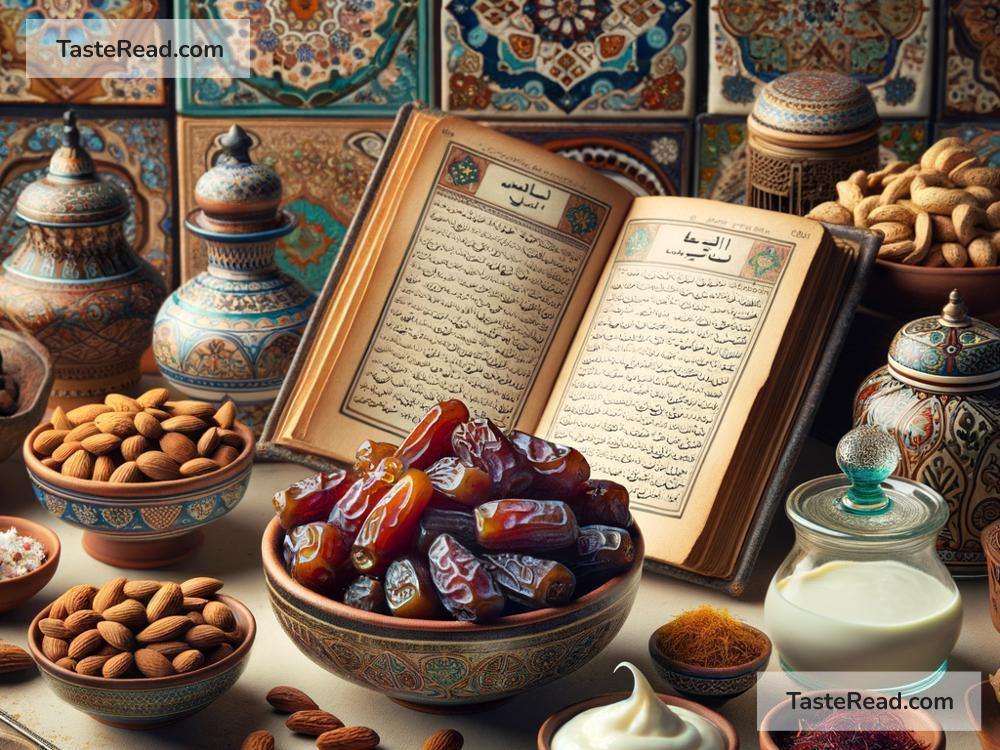The Fascinating History of Dates in Middle Eastern Cuisine
When you think about the Middle East, images of sandy deserts, bustling markets, and aromatic spices probably come to mind. But there’s one simple fruit that has been central to this region for thousands of years: the humble date. Dates are more than just a sweet treat—they carry a deep history and cultural significance that has shaped Middle Eastern cuisine and lifestyle. Let’s dive into the fascinating story of this iconic fruit!
What Are Dates?
Dates are the fruit of the date palm tree, scientifically known as Phoenix dactylifera. These trees thrive in hot and arid climates, making the Middle East an ideal environment for their growth. The fruit is small, oval, and brown, with a wrinkled surface when dried. Dates are naturally sweet and nutritious, packed with energy, fiber, vitamins, and minerals.
But dates aren’t just a modern health snack; they’ve been a staple food in the Middle East for thousands of years. Their unique flavor and versatility earned them a special place in the region’s cuisine and culture.
A Fruit with Ancient Roots
The history of dates dates back (pun intended!) thousands of years. In fact, many historians believe they’ve been cultivated for over 6,000 years—making them one of the oldest fruits grown by humans. The Middle East was their home from the very beginning. Archeological evidence shows that ancient civilizations like Mesopotamia (modern-day Iraq) and Ancient Egypt recognized the value of dates.
For the people living in harsh desert regions, dates weren’t just food; they were life-saving. Dates provided nourishment for travelers and nomads crossing long, dry stretches of land, offering energy and hydration when little else was available. People called them “the fruit of the desert,” and they were often carried in bags by traders or eaten during long journeys.
Dates in Religion and Tradition
Dates also have deep roots in Middle Eastern religions, especially Islam. In the Quran, dates are mentioned several times as a blessed fruit. According to Islamic tradition, Prophet Muhammad is said to have broken his fast with dates and water—a practice still followed by Muslims around the world during Ramadan.
The symbolism of dates in Islam has elevated their cultural significance. For Muslims, offering dates to others during Ramadan is considered a kind and generous act. It’s common to find families sharing delicious dates with their neighbors, friends, and loved ones.
Christianity and Judaism also mention dates in their holy texts, emphasizing their role in biblical times. For example, the ancient Israelites considered dates a symbol of abundance and prosperity.
Culinary Uses: Sweet and Savory
While dates are naturally sweet, they’ve found their way into a variety of Middle Eastern dishes, both sweet and savory. In the desert climate, dates served as a primary source of sugar before refined sugar was introduced. They could be eaten fresh or dried, stuffed, or cooked into traditional dishes.
One of the most common ways to enjoy dates is simply eating them on their own as a snack, especially after meals or during celebrations. But Middle Eastern cooks have elevated the humble date into an art form!
For example, dates are sometimes stuffed with nuts—like almonds, walnuts, or pistachios—and spiced with cinnamon or cardamom to create elegant appetizers or treats. They can also be dipped in chocolate or rolled in sesame seeds for even more flavor.
In desserts, date paste is often used as a filling for pastries, cakes, and cookies. Ma’amoul, a beloved Middle Eastern cookie, features dates stuffed inside buttery, crumbly dough. Dates also play a starring role in sticky, syrupy treats like tamr, where they’re often paired with honey or nuts for a decadent experience.
But dates aren’t just for sweets! They appear in savory dishes as well. One famous example is Moroccan tagine, a slow-cooked stew with meat (like lamb or chicken), dates, and spices like cinnamon and turmeric. The natural sweetness of the dates balances the bold flavors of the spices, creating a mouthwatering combination.
Modern-Day Dates
Today, dates remain popular in the Middle East and across the world. New variations of date recipes continue to emerge, blending traditional techniques with modern flavors. Thanks to globalization, dates have reached markets far beyond the Middle East, where they’re enjoyed as health snacks by people in Europe, Asia, and North America.
The Middle East is still the leader in date production, with countries like Saudi Arabia, Iran, and Egypt growing millions of tons of dates every year. In fact, there are over 200 varieties of dates, ranging in taste, texture, and color. Some of the most famous types include Medjool (large, soft, and sweet), Deglet Noor (firmer), and Sukkary (known for their melting sweetness).
A Symbol of Culture and Hospitality
Beyond the kitchen, dates are a symbol of Middle Eastern hospitality. It’s common for hosts to offer guests dates along with coffee as a way of welcoming them into their homes. Guests feel cared for and respected when dates are served, especially high-quality ones.
Dates also have significant symbolic meaning. In some cultures of the Middle East, they represent unity, abundance, and love. Families gather to harvest date palms together, passing this cultural tradition on to new generations. While the world continues to evolve, dates remain a reminder of the region’s rich heritage and history.
Conclusion
From ancient desert journeys to modern culinary masterpieces, dates have always been more than just food—they’re a treasure of the Middle East. As one of the oldest cultivated fruits in the world, their history is deeply intertwined with the people, traditions, and cuisines of this region.
So the next time you bite into a date, think about its incredible journey through time. It’s not just a sweet treat; it’s a taste of Middle Eastern history and culture in every bite!


